A Numerical and Experimental Study of a Novel Heat Sink Design for Natural Convection Cooling of LED Grow Lights
Abstract
1. Introduction
2. A Novel Heat Sink Design for Cooling Led Grow Lights
3. Computational Model and Validation
4. Results and Discussion
4.1. Heat Transfer Characteristics of Optimum Fins
4.2. Design and Numerical Analysis of the New Heat Sink
4.3. Testing of the New Heat Sink
5. Conclusions
Author Contributions
Funding
Acknowledgments
Conflicts of Interest
Abbreviations
| CFD | Computational fluid dynamics |
| RANS | Reynolds-averaged Navier–Stokes |
| 3D | Three-dimensional |
Nomenclature
| Base surface area of the fin array (= ), m | |
| Thermal diffusivity of air, m/s | |
| Coefficient of thermal expansion of air (= 1/), 1/K | |
| H | Fin height, mm |
| K | Thermal conductivity of the fin (= 167 W/mK) |
| Thermal conductivity of the adhesive, W/mK | |
| L | Fin length, mm |
| Opening length, mm | |
| n | Number of fins |
| Q | Total heat transfer, W |
| Rayleigh number (= ) | |
| s | Fin spacing, mm |
| t | Fin thickness, mm |
| T | Fin surface temperature, C or K |
| Ambient temperature, C or K | |
| Film temperature, C or K | |
| Temperature difference between the fin surface and ambient temperatures, C or K | |
| u | Air velocity in the x-direction, m/s |
| v | Air velocity in the y-direction, m/s |
| Kinematic viscosity of air, m/s | |
| w | Air velocity in the z-direction, m/s |
| W | Width of the fin array, mm |
| Width of the opening, mm | |
| Density of the fin material, kg/m |
References
- Specht, K.; Siebert, R.; Hartmann, I.; Freisinger, U.B.; Sawicka, M.; Werner, A.; Thomaier, S.; Henckel, D.; Walk, H.; Dierich, A. Urban agriculture of the future: An overview of sustainability aspects of food production in and on buildings. Agric. Hum. Values 2014, 31, 33–51. [Google Scholar] [CrossRef]
- Xu, Y.; Chang, Y.; Chen, G.; Lin, H. The research on LED supplementary lighting system for plants. Optik 2016, 127, 7193–7201. [Google Scholar] [CrossRef]
- Song, J.W. Grow light for plant factory using quantum dot LED. J. Int. Counc. Electr. Eng. 2016, 6, 13–16. [Google Scholar] [CrossRef]
- Benke, K.; Tomkins, B. Future food-production systems: Vertical farming and controlled-environment agriculture. Sustain. Sci. Pract. Policy 2017, 13, 13–26. [Google Scholar] [CrossRef]
- Hegedüs, J.; Hantos, G.; Poppe, A. Lifetime Modelling Issues of Power Light Emitting Diodes. Energies 2020, 13, 3370. [Google Scholar] [CrossRef]
- Baran, K.; Różowicz, A.; Wachta, H.; Różowicz, S. Modeling of Selected Lighting Parameters of LED Panel. Energies 2020, 13, 3583. [Google Scholar] [CrossRef]
- Kays, W.M. Convective Heat and Mass Transfer; Tata McGraw-Hill Education: New York, NY, USA, 2012. [Google Scholar]
- Lienhard, J.H. A Heat Transfer Textbook; Courier Corporation: North Chelmsford, MA, USA, 2013. [Google Scholar]
- Khatami, S.; Rahbar, N. An analytical study of entropy generation in rectangular natural convective porous fins. Therm. Sci. Eng. Prog. 2019, 11, 142–149. [Google Scholar] [CrossRef]
- Starner, K.; McManus, H. An experimental investigation of free convection heat transfer from rectangular-fin arrays. J. Heat Transf. 1963, 85, 273–277. [Google Scholar] [CrossRef]
- Jones, C.D.; Smith, L.F. Optimum arrangement of rectangular fins on horizontal surfaces for free convection heat transfer. J. Heat Transf. 1970, 92, 6–10. [Google Scholar] [CrossRef]
- Turner, J. Buoyant convection from isolated sources. In Buoyancy Effects in Fluids; Cambridge University Press: Cambridge, UK, 1973; pp. 165–206. [Google Scholar]
- Cebeci, T.; Bradshaw, P. Physical and Computational Aspects of Convective Heat Transfer; Springer Science & Business Media: Berlin/Heidelberg, Germany, 2012. [Google Scholar]
- Bar-Cohen, A. Fin thickness for an optimized natural convection array of rectangular fins. ASME J. Heat Transf. 1979, 101, 564–566. [Google Scholar] [CrossRef]
- Bar-Cohen, A.; Rohsenow, W. Thermally optimum spacing of vertical, natural convection cooled, parallel plates. J. Heat Transf. 1984, 106, 116–123. [Google Scholar] [CrossRef]
- Effendi, N.S.; Kim, K.J. Orientation effects on natural convective performance of hybrid fin heat sinks. Appl. Therm. Eng. 2017, 123, 527–536. [Google Scholar] [CrossRef]
- Ong, K.; Tan, C.; Lai, K.; Tan, K. Heat spreading and heat transfer coefficient with fin heat sink. Appl. Therm. Eng. 2017, 112, 1638–1647. [Google Scholar] [CrossRef]
- Baskaya, S.; Sivrioglu, M.; Ozek, M. Parametric study of natural convection heat transfer from horizontal rectangular fin arrays. Int. J. Therm. Sci. 2000, 39, 797–805. [Google Scholar] [CrossRef]
- Harahap, F.; Lesmana, H.; Dirgayasa, I.A.S. Measurements of heat dissipation from miniaturized vertical rectangular fin arrays under dominant natural convection conditions. Heat Mass Transf. 2006, 42, 1025–1036. [Google Scholar] [CrossRef]
- Bayat, M.; Faridzadeh, M.R.; Toghraie, D. Investigation of finned heat sink performance with nano enhanced phase change material (NePCM). Therm. Sci. Eng. Prog. 2018, 5, 50–59. [Google Scholar] [CrossRef]
- Mandal, S.; Deb, A.; Sen, D. Mixed convective heat transfer with surface radiation in a rectangular channel with heat sources in presence of heat spreader. Therm. Sci. Eng. Prog. 2019, 14, 100423. [Google Scholar] [CrossRef]
- Karvinen, R.; Karvinen, T. Optimum geometry of plate fins. J. Heat Transf. 2012, 134, 081801. [Google Scholar] [CrossRef]
- Adhikari, R.; Wood, D.; Pahlevani, M. Optimizing rectangular fins for natural convection cooling using CFD. Therm. Sci. Eng. Prog. 2020, 17, 100484. [Google Scholar] [CrossRef]
- Huang, G.J.; Wong, S.C.; Lin, C.P. Enhancement of natural convection heat transfer from horizontal rectangular fin arrays with perforations in fin base. Int. J. Therm. Sci. 2014, 84, 164–174. [Google Scholar] [CrossRef]
- Micheli, L.; Fernández, E.F.; Almonacid, F.; Mallick, T.K.; Smestad, G.P. Performance, limits and economic perspectives for passive cooling of High Concentrator Photovoltaics. Sol. Energy Mater. Sol. Cells 2016, 153, 164–178. [Google Scholar] [CrossRef]
- ANSYS. ANSYS Academic Research Icepak, Release 18; ANSYS: Canonsburg, PA, USA, 2018. [Google Scholar]
- Tari, I.; Mehrtash, M. Natural convection heat transfer from inclined plate-fin heat sinks. Int. J. Heat Mass Transf. 2013, 56, 574–593. [Google Scholar] [CrossRef]
- Dogan, M.; Sivrioglu, M.; Yılmaz, O. Numerical analysis of natural convection and radiation heat transfer from various shaped thin fin-arrays placed on a horizontal plate-a conjugate analysis. Energy Convers. Manag. 2014, 77, 78–88. [Google Scholar] [CrossRef]
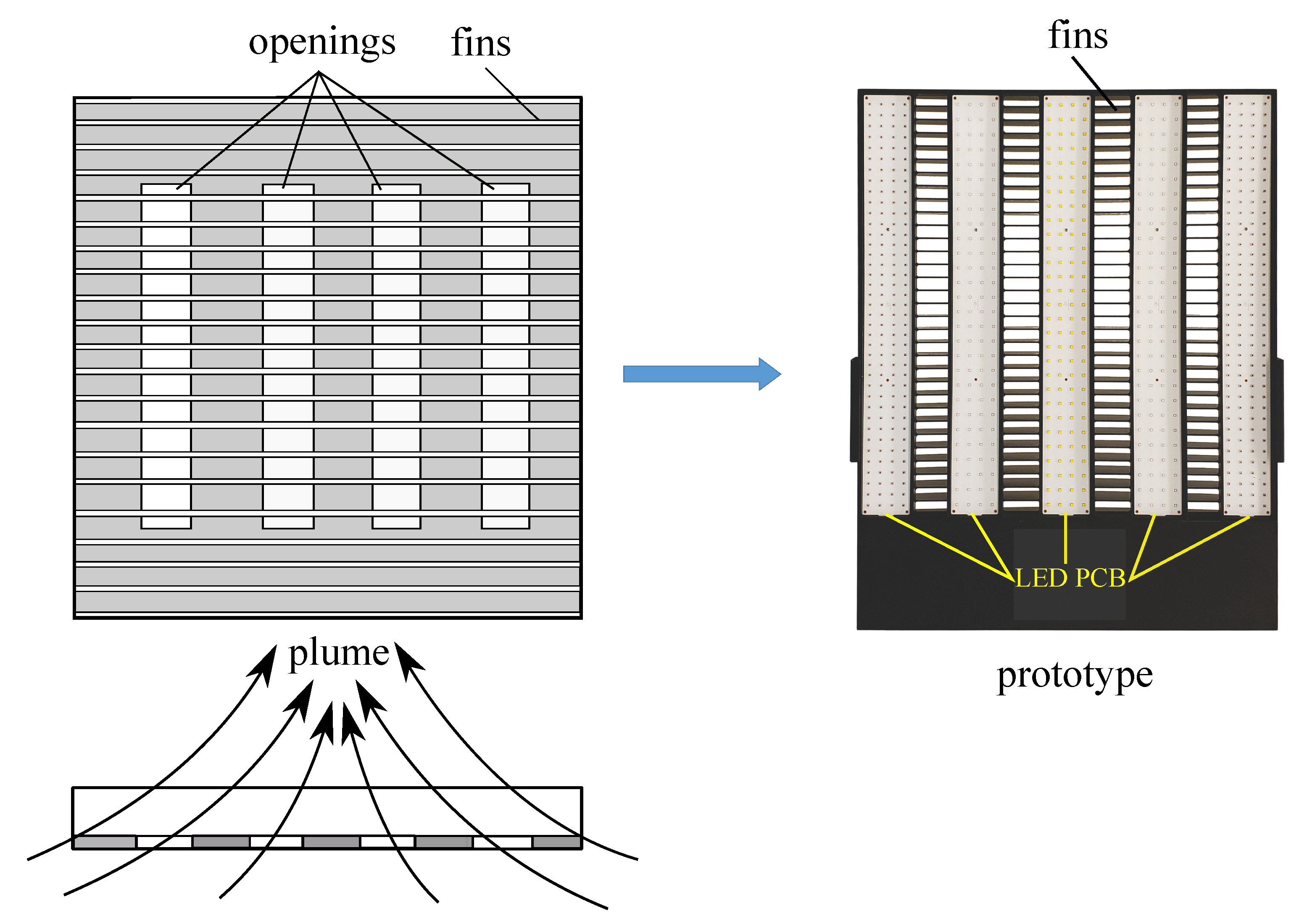
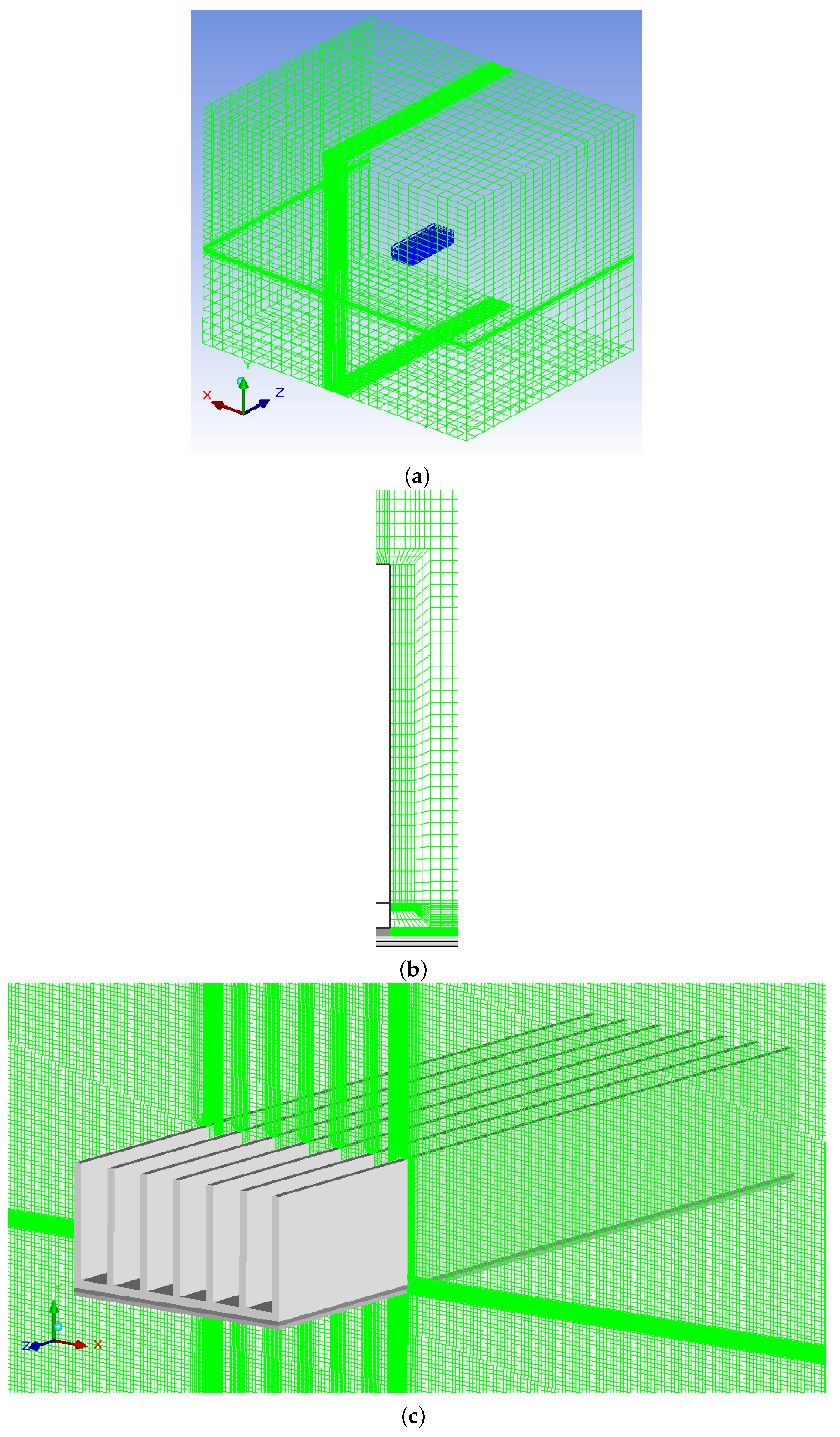
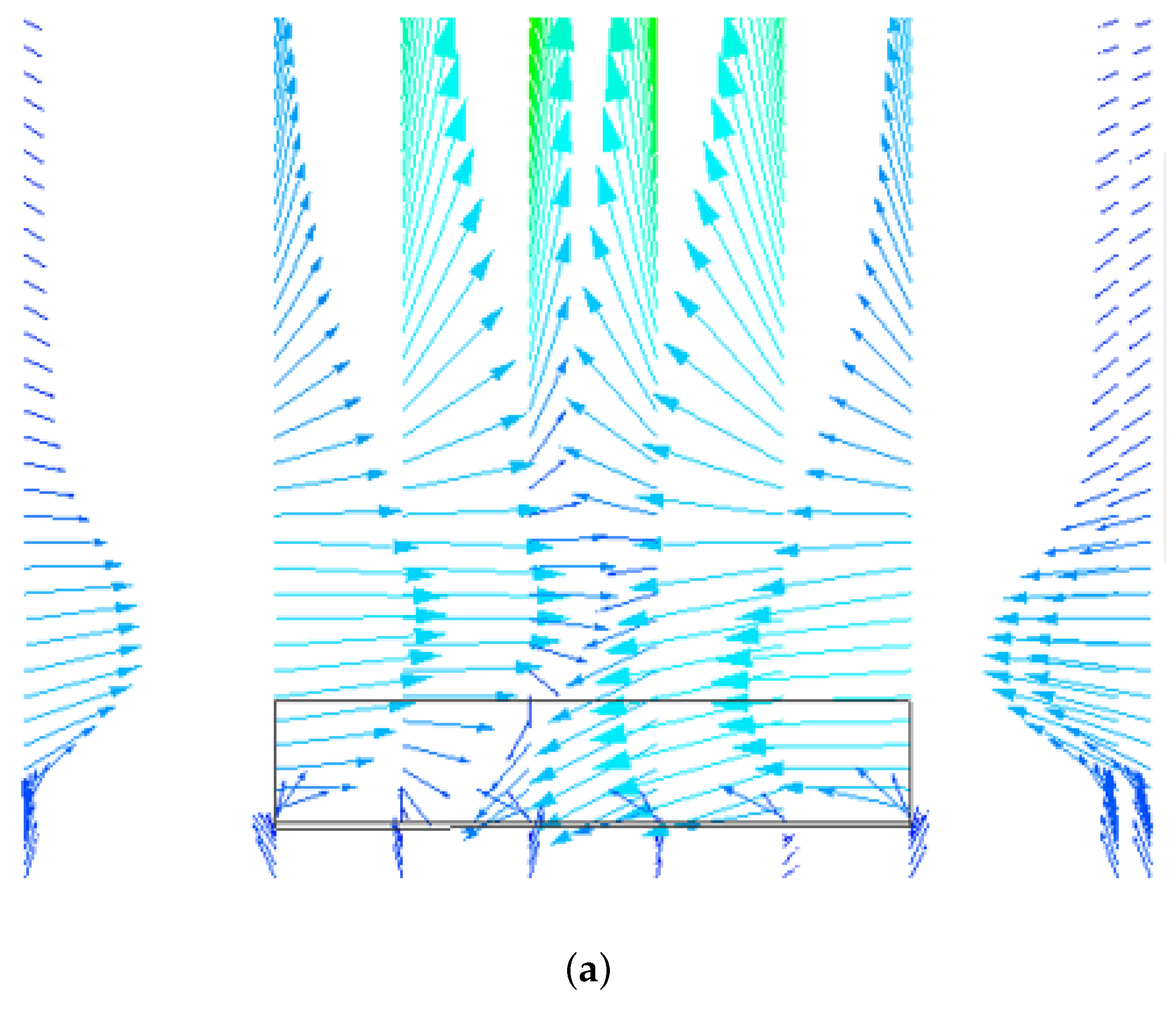
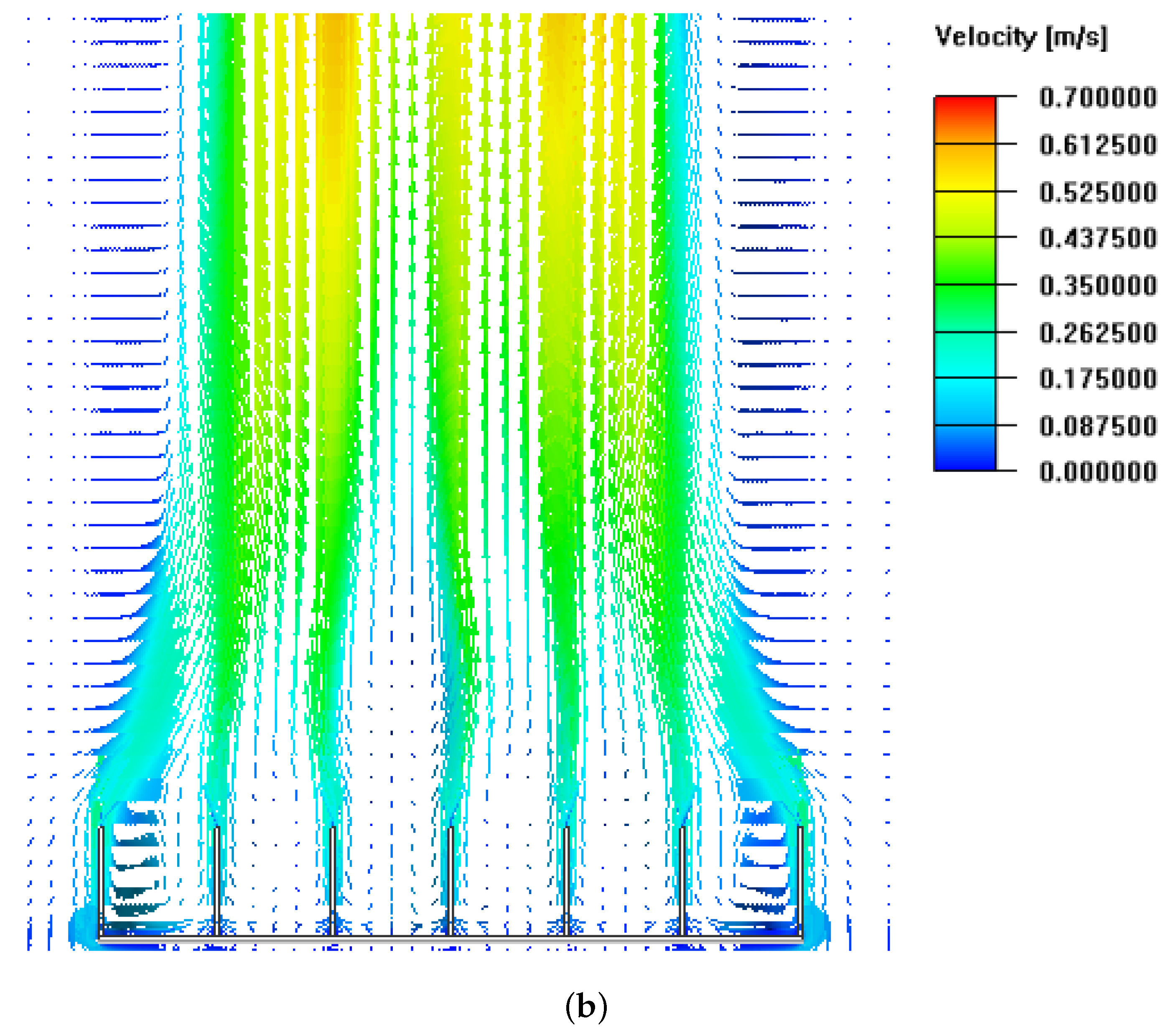
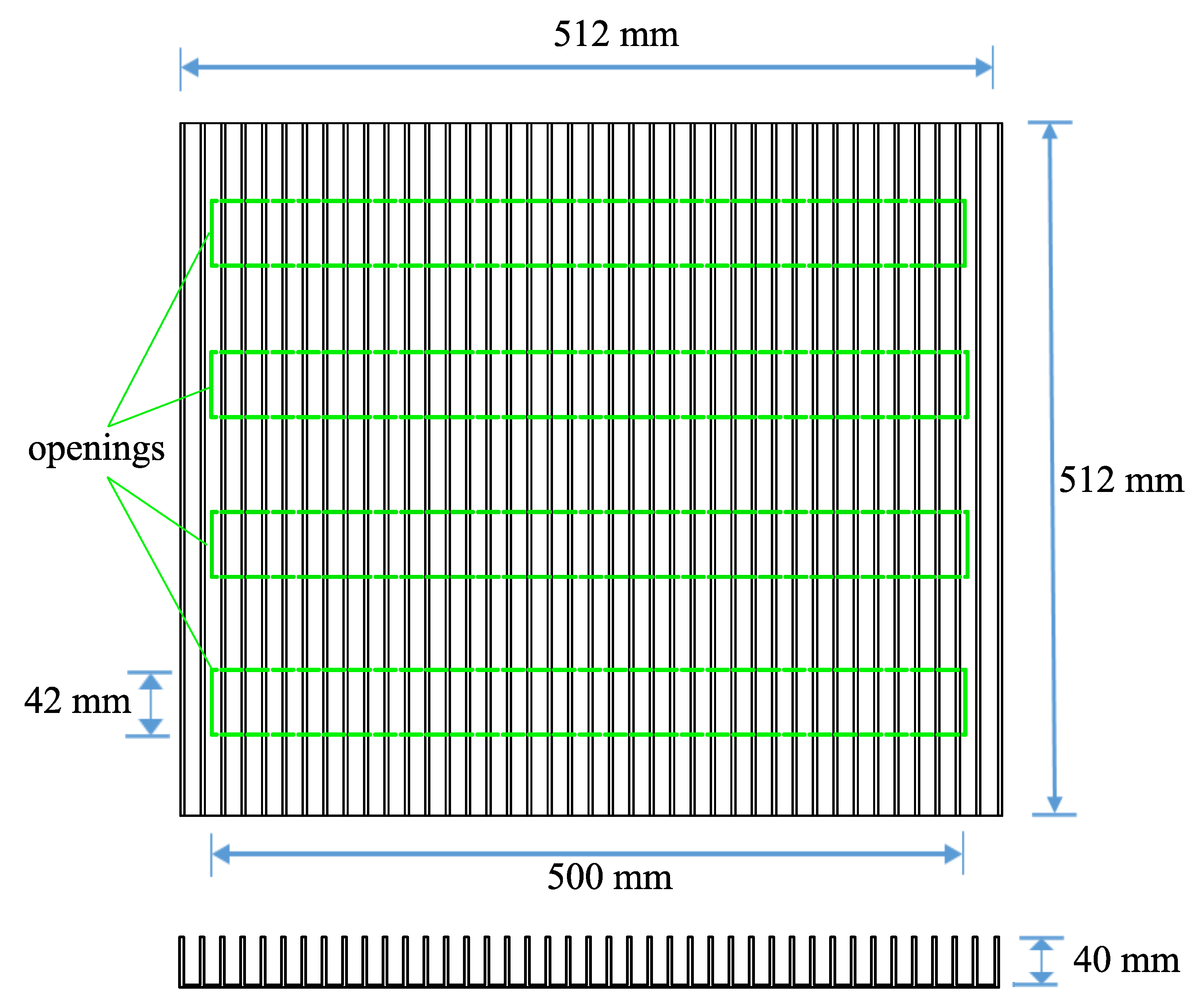
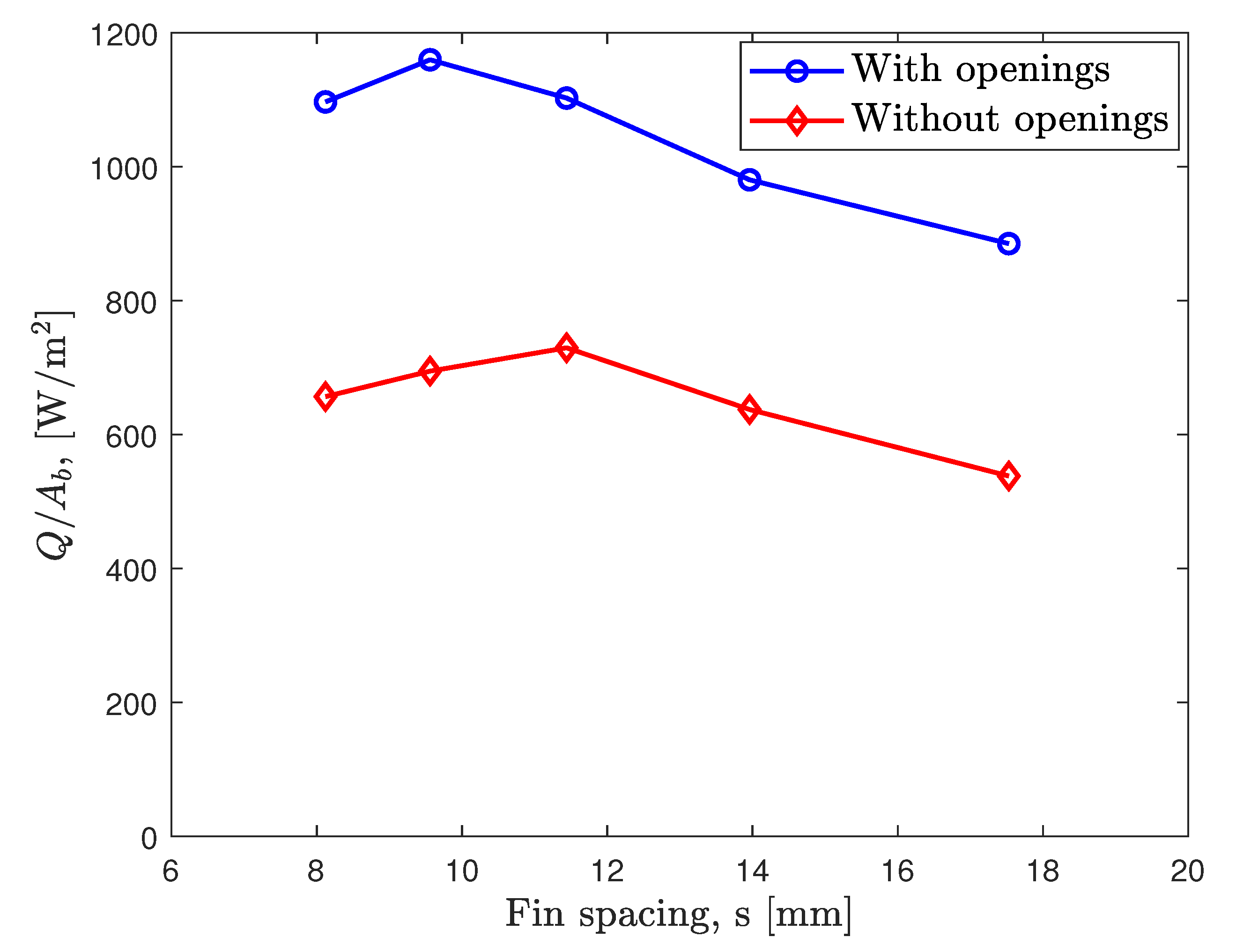
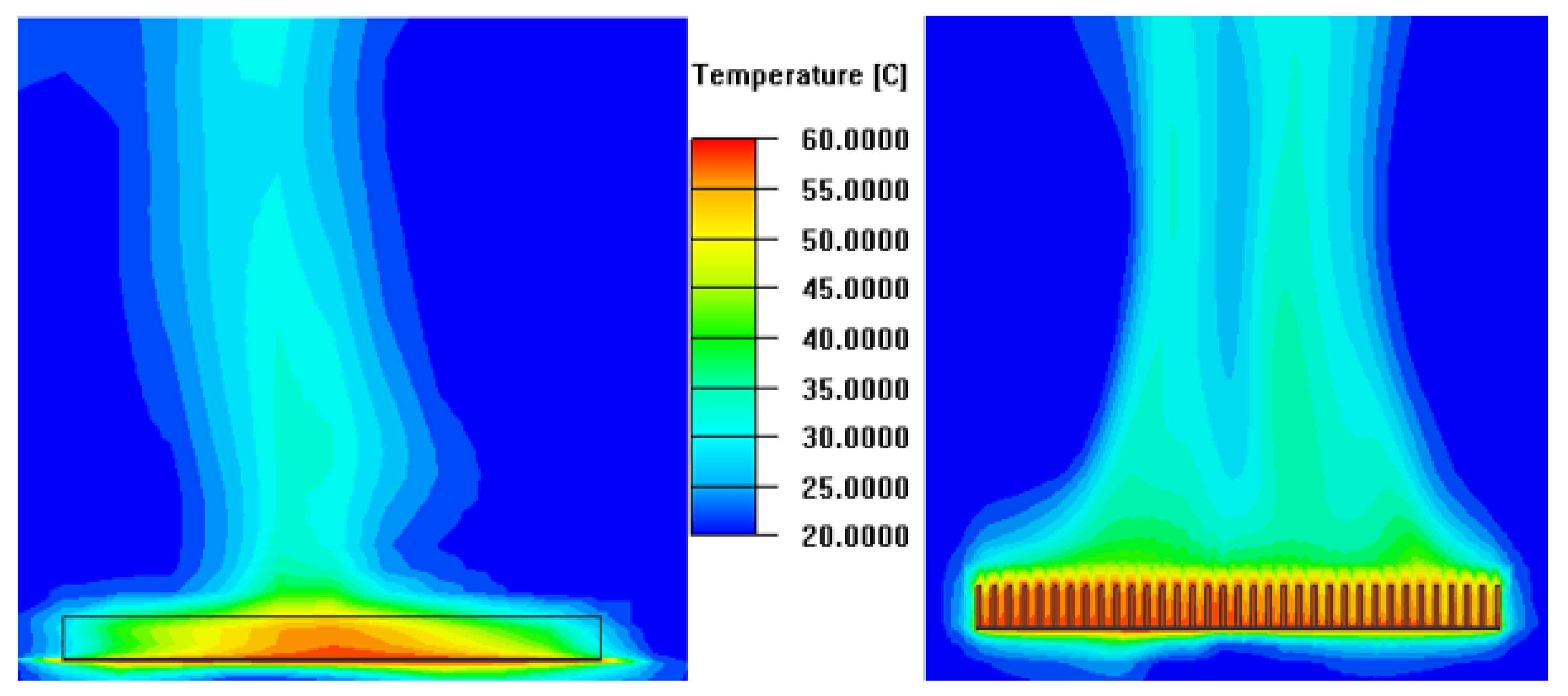
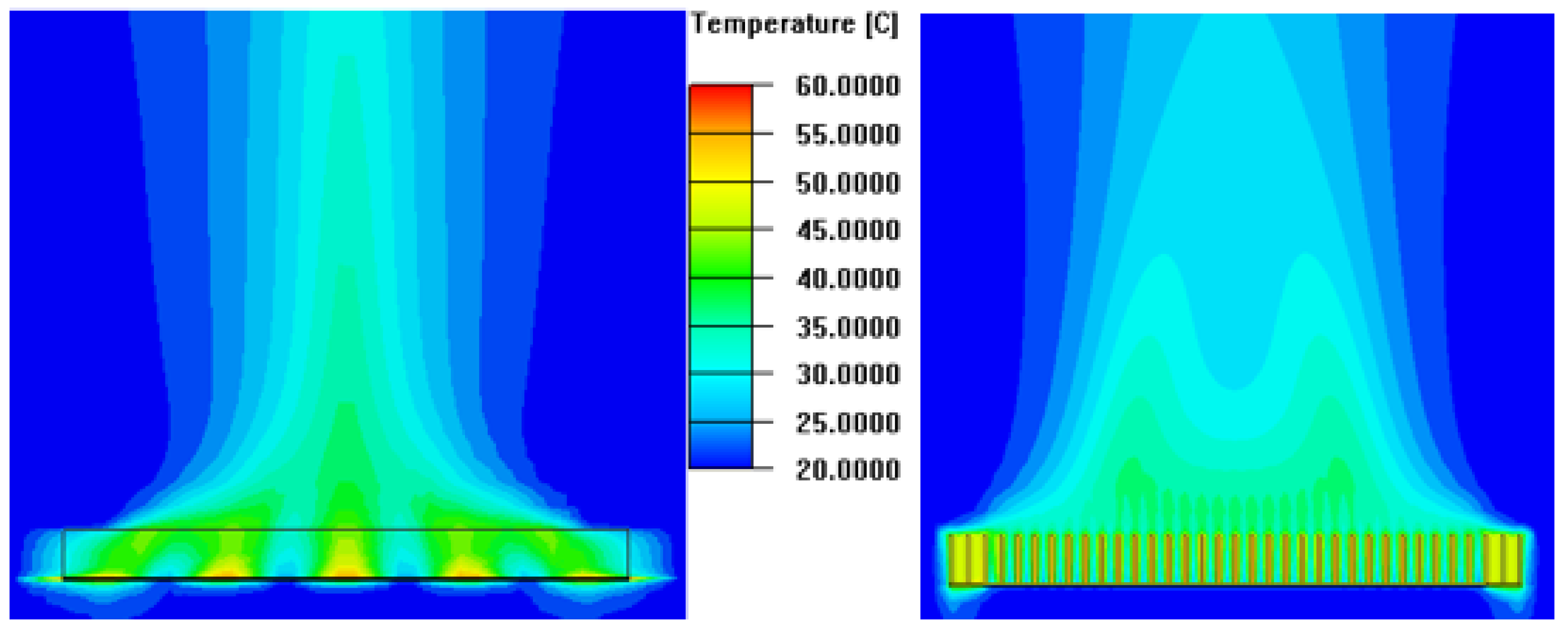
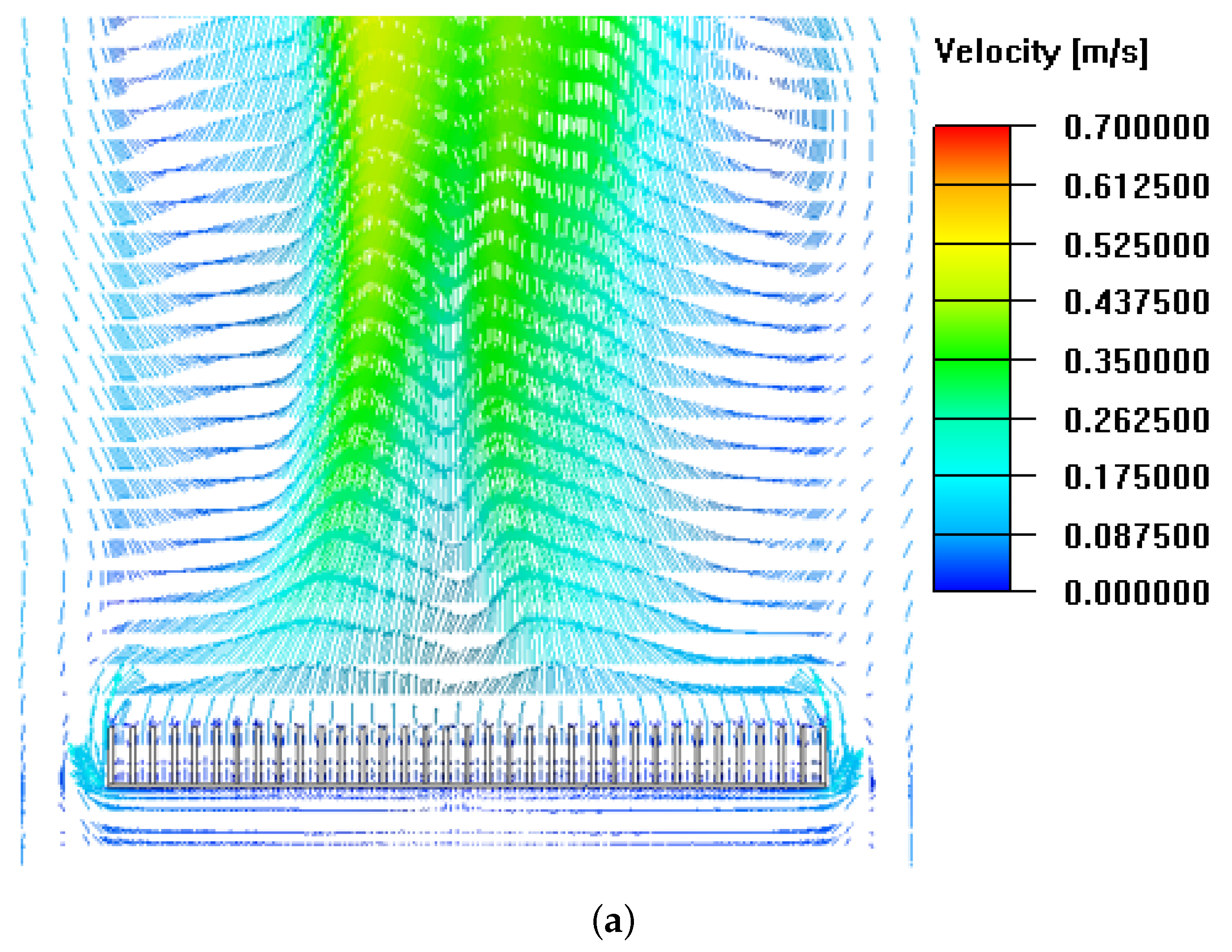
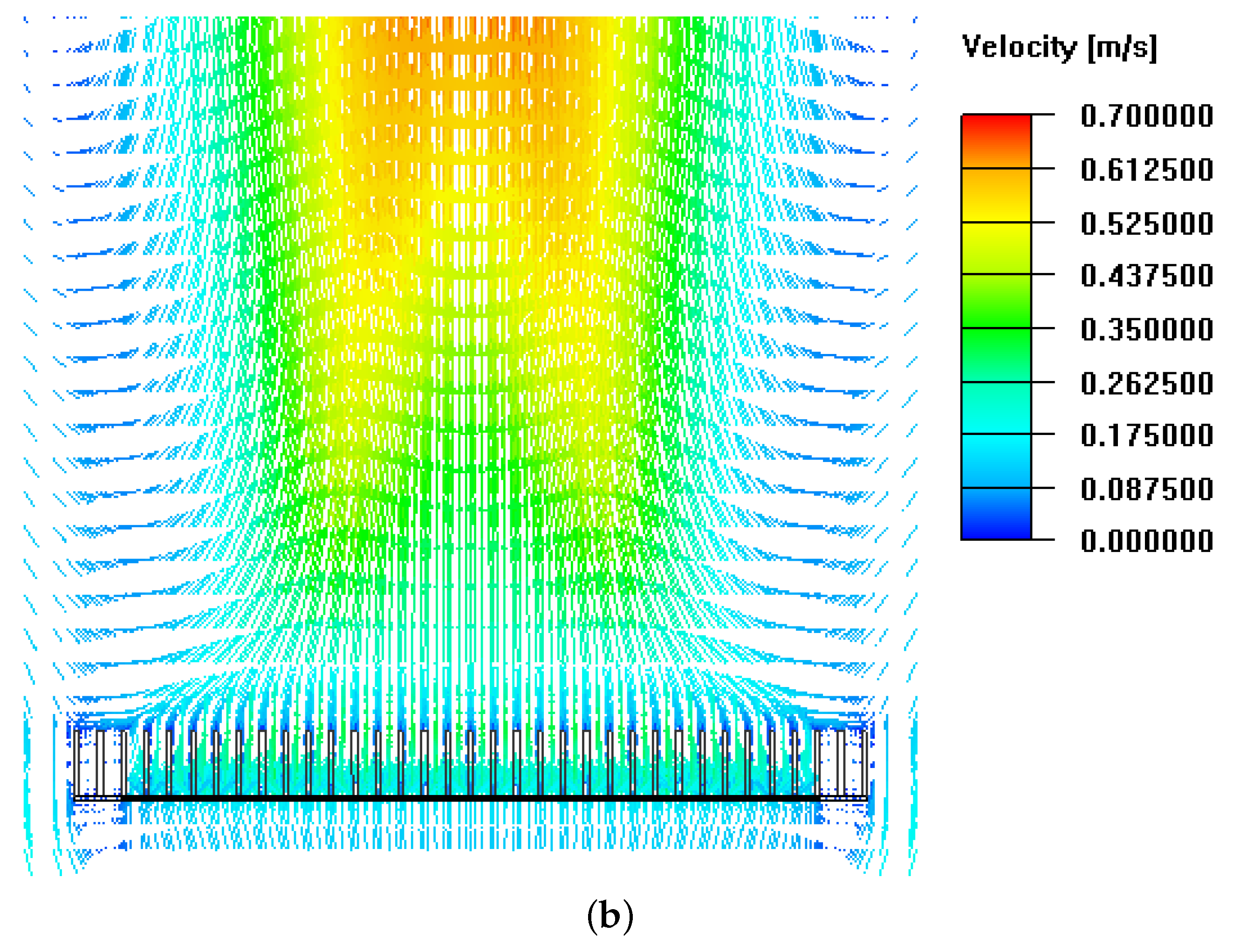
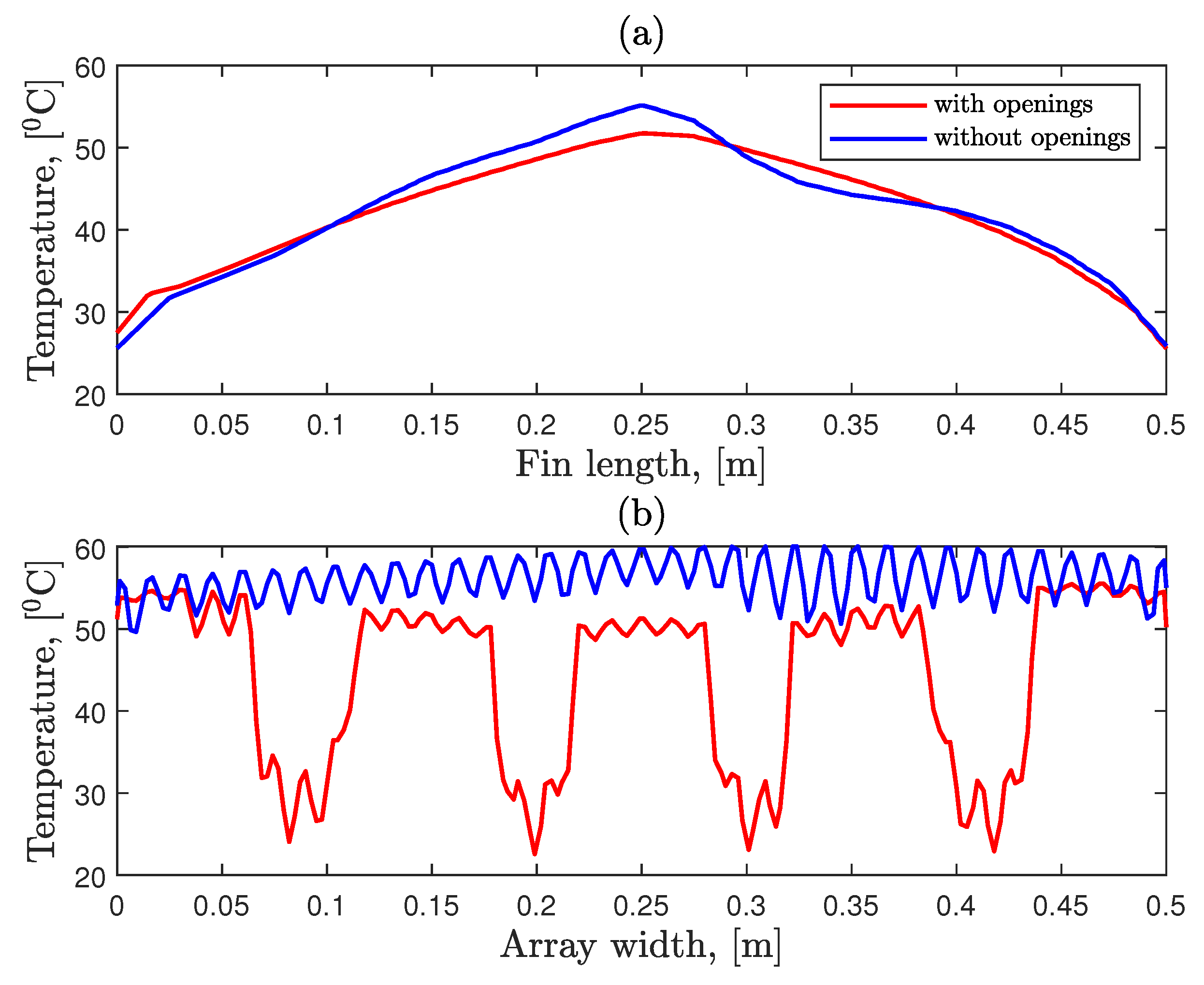
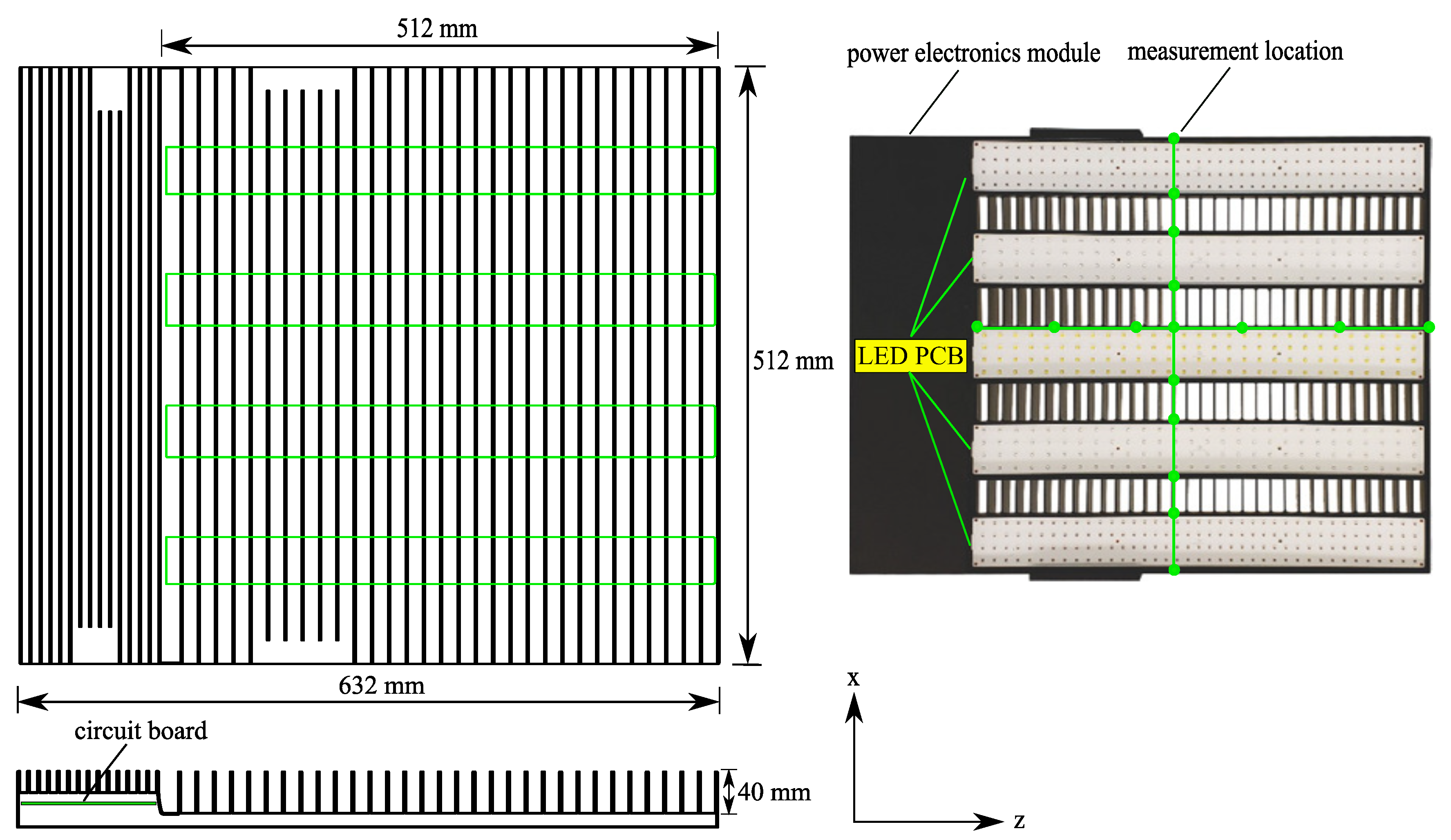
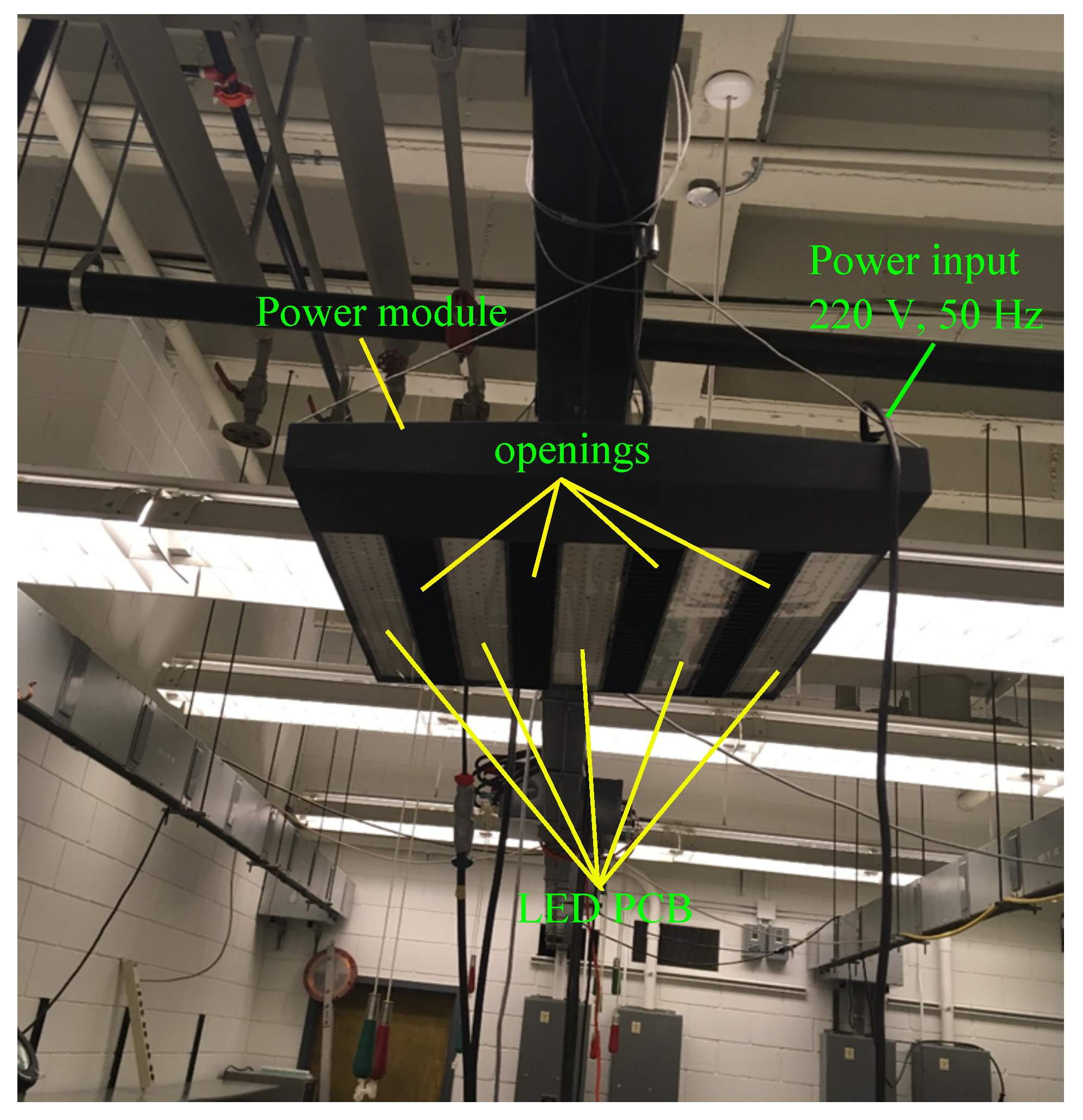
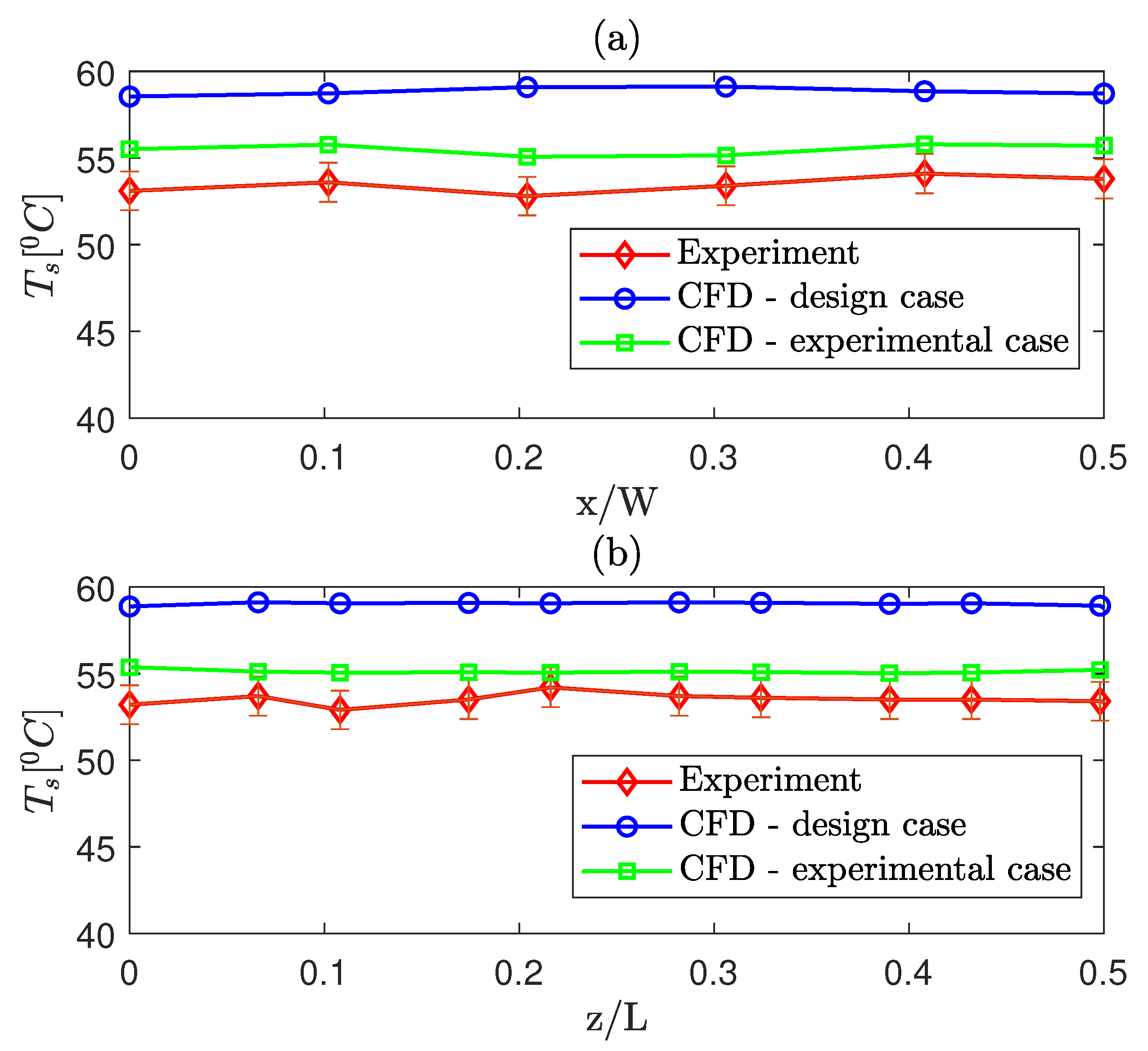

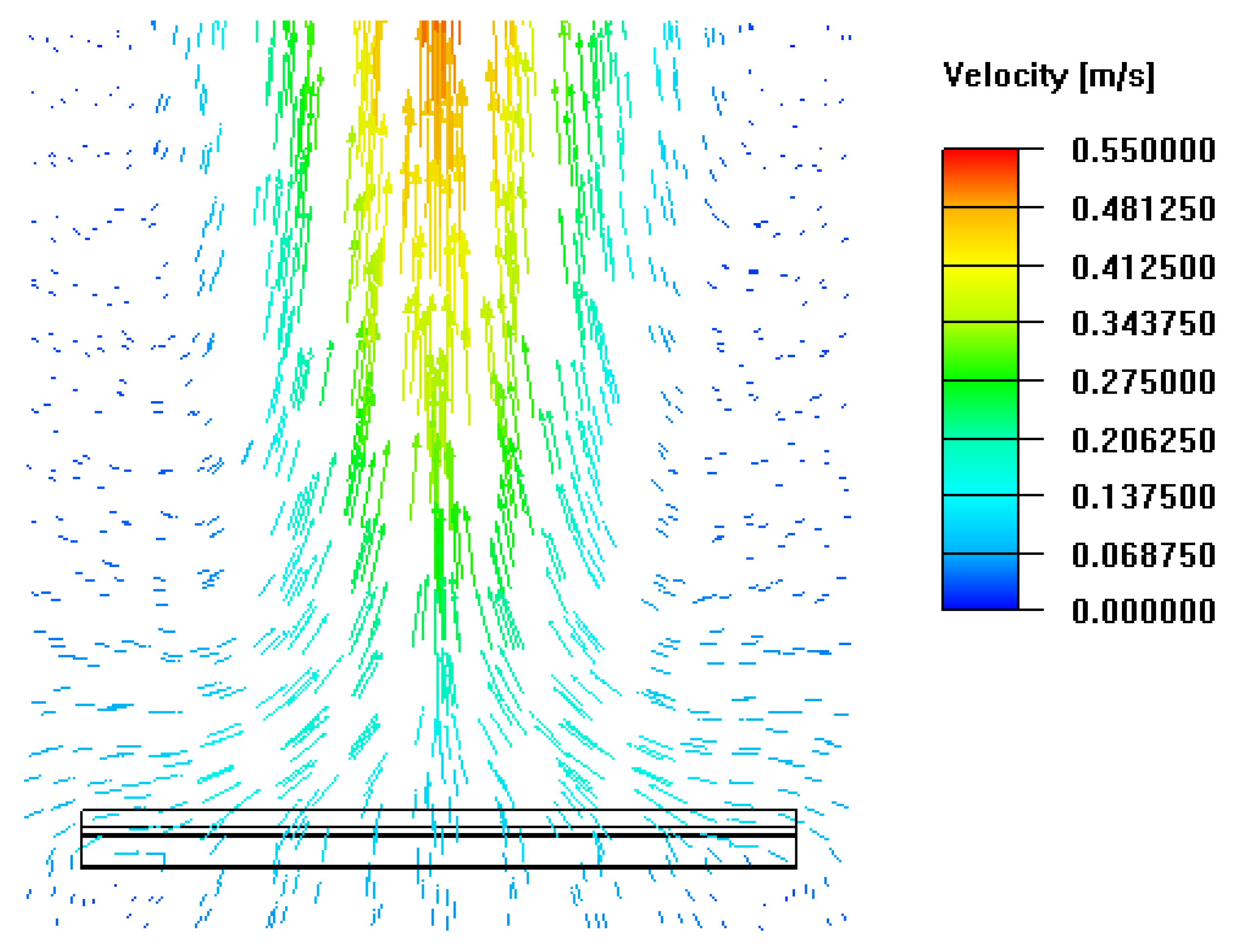
| Length, mm | Height, mm | Spacing, mm | No. of Fins | Temperature Difference, C |
|---|---|---|---|---|
| 254 | 49.28 | 4.04, 6.35, 8.38, 12.70, 25.40, 50.80 | 7 | 151 |
| Parameters | Without Openings | With Openings |
|---|---|---|
| Fin length, L (mm) | 512 | 512 |
| Array width, W (mm) | 512 | 512 |
| Fin height, H (mm) | 40 | 40 |
| Fin spacing, s (mm) | 8–14 | 8–14 |
| Fin thickness, t (mm) | 2 | 2 |
| Number of fins, n | 25–45 | 25–45 |
| Opening length, (mm) | - | 500 |
| Opening width, (mm) | - | 42 |
| Number of openings | - | 4 |
| Maximum fin temperature, (C) | 60 | 60 |
| Ambient temperature, (C) | 20 | 20 |
© 2020 by the authors. Licensee MDPI, Basel, Switzerland. This article is an open access article distributed under the terms and conditions of the Creative Commons Attribution (CC BY) license (http://creativecommons.org/licenses/by/4.0/).
Share and Cite
Adhikari, R.; Beyragh, D.; Pahlevani, M.; Wood, D. A Numerical and Experimental Study of a Novel Heat Sink Design for Natural Convection Cooling of LED Grow Lights. Energies 2020, 13, 4046. https://doi.org/10.3390/en13164046
Adhikari R, Beyragh D, Pahlevani M, Wood D. A Numerical and Experimental Study of a Novel Heat Sink Design for Natural Convection Cooling of LED Grow Lights. Energies. 2020; 13(16):4046. https://doi.org/10.3390/en13164046
Chicago/Turabian StyleAdhikari, Ram, Dawood Beyragh, Majid Pahlevani, and David Wood. 2020. "A Numerical and Experimental Study of a Novel Heat Sink Design for Natural Convection Cooling of LED Grow Lights" Energies 13, no. 16: 4046. https://doi.org/10.3390/en13164046
APA StyleAdhikari, R., Beyragh, D., Pahlevani, M., & Wood, D. (2020). A Numerical and Experimental Study of a Novel Heat Sink Design for Natural Convection Cooling of LED Grow Lights. Energies, 13(16), 4046. https://doi.org/10.3390/en13164046







